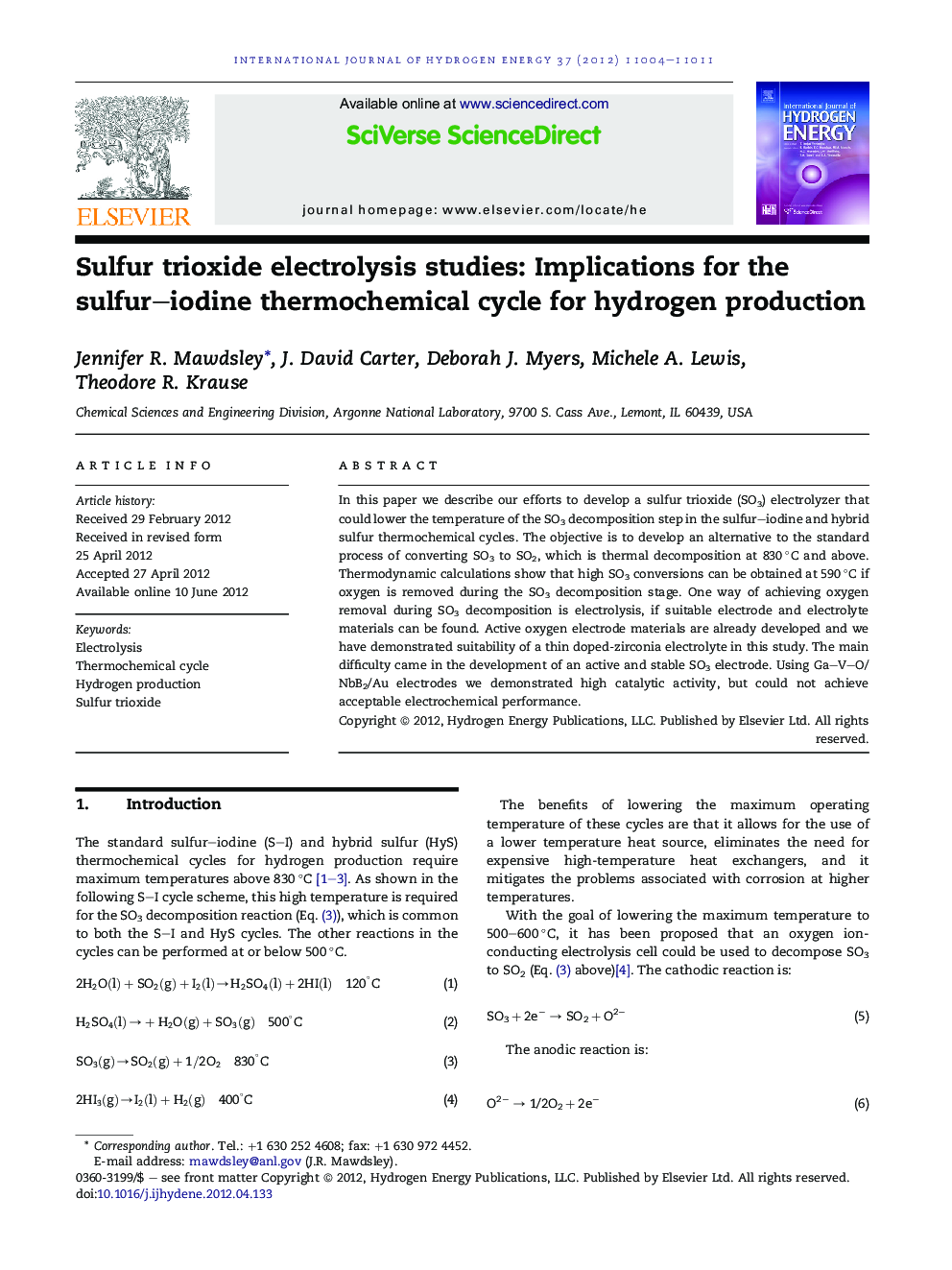| کد مقاله | کد نشریه | سال انتشار | مقاله انگلیسی | نسخه تمام متن |
|---|---|---|---|---|
| 1276265 | 1497554 | 2012 | 8 صفحه PDF | دانلود رایگان |

In this paper we describe our efforts to develop a sulfur trioxide (SO3) electrolyzer that could lower the temperature of the SO3 decomposition step in the sulfur–iodine and hybrid sulfur thermochemical cycles. The objective is to develop an alternative to the standard process of converting SO3 to SO2, which is thermal decomposition at 830 °C and above. Thermodynamic calculations show that high SO3 conversions can be obtained at 590 °C if oxygen is removed during the SO3 decomposition stage. One way of achieving oxygen removal during SO3 decomposition is electrolysis, if suitable electrode and electrolyte materials can be found. Active oxygen electrode materials are already developed and we have demonstrated suitability of a thin doped-zirconia electrolyte in this study. The main difficulty came in the development of an active and stable SO3 electrode. Using Ga–V–O/NbB2/Au electrodes we demonstrated high catalytic activity, but could not achieve acceptable electrochemical performance.
► The 99.9% of oxygen must be removed to achieve 80% conversion of SO3 to SO2 at 600 °C.
► The overvoltage of the electrolysis cell must be <160 mV for 35% cycle efficiency.
► The electrolyte should be zirconia-based and <10 μm thick.
► Stable, non-conductive sulfates of many elements limit materials choices for the SO3 electrode.
► A Ga–V–O/NbB2/Au electrode worked well as a catalyst, but quickly deactivated.
Journal: International Journal of Hydrogen Energy - Volume 37, Issue 15, August 2012, Pages 11004–11011